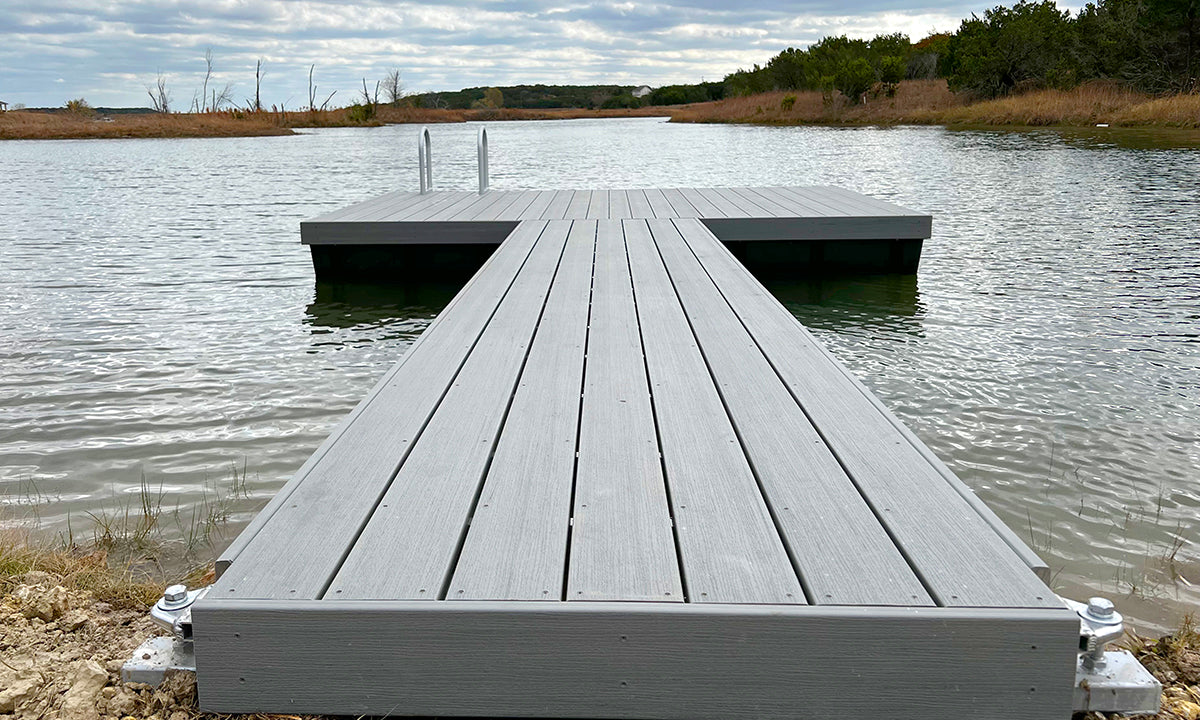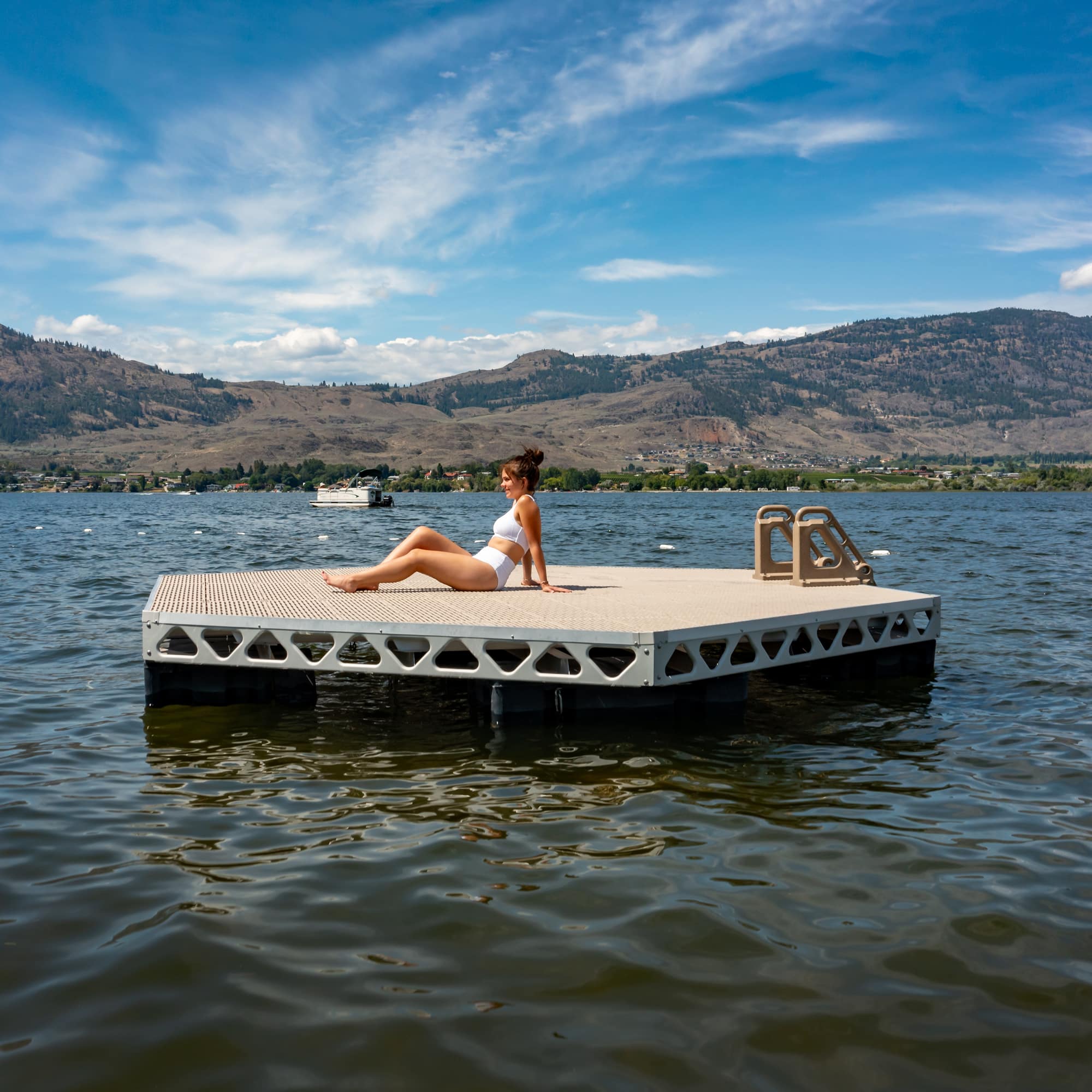Maximizing Your Outdoor Room with Specialized Floating Dock Providers
Maximizing Your Outdoor Room with Specialized Floating Dock Providers
Blog Article
Develop the Perfect Docking Option With Floating Docks
Floating docks existing a versatile remedy for a range of maritime needs, adjusting seamlessly to rising and fall water levels and varied vessel kinds. Their modular nature enables rapid installment and moving, yet the selection of ideal materials and layout functions is vital for making sure both functionality and aesthetic charm. As we check out the crucial aspects that contribute to the performance of floating docks, numerous crucial aspects regarding stability and maintenance will emerge, questioning concerning how to enhance your docking experience. The subsequent discussion will illuminate these important considerations.

Advantages of Floating Docks
Floating docks offer numerous benefits that make them an excellent choice for different maritime applications. One of the primary benefits is their versatility to changing water levels. Unlike taken care of docks, floating docks surge and loss with the trend, guaranteeing regular accessibility for vessels. This attribute is specifically vital in areas prone to significant tidal variations or seasonal water level changes.
In addition, floating docks are normally much easier and quicker to install compared to typical fixed structures. Their modular design enables uncomplicated assembly and disassembly, helping with upkeep and moving when required. This adaptability is particularly advantageous for momentary applications or in environments where conditions may alter.
Floating docks likewise tend to be more ecologically friendly, as they lessen interruption to the seabed and surrounding water ecological communities. Their buoyant nature decreases the risk of damage to marine life, advertising a healthier setting. Additionally, these docks can be personalized to fit various vessel dimensions, ensuring that they satisfy details functional demands - floating docks.
Ultimately, the combination of versatility, convenience of installment, and ecological factors to consider makes floating docks an extremely reliable service for a large range of maritime needs.
Choosing the Right Products
Picking the ideal materials for floating docks is vital to make certain resilience, long life, and stability. The selection of products straight affects the dock's performance in various environmental conditions, consisting of direct exposure to water, sunshine, and prospective wear from aquatic website traffic.
Usual materials utilized for floating docks consist of aluminum, timber, and high-density polyethylene (HDPE) Light weight aluminum is lightweight, corrosion-resistant, and needs marginal maintenance, making it an exceptional choice for longevity. Its preliminary cost can be higher contrasted to other products.
Wood, while aesthetically enticing and providing a typical look, can be prone to rot and bug damages if not appropriately dealt with. As a result, making use of pressure-treated timber or naturally resilient species like cedar or redwood can alleviate these problems.
HDPE is a popular option due to its resistance to UV rays and chemicals, in addition to being eco-friendly. floating dock company. It is readily available and lightweight in numerous shades, permitting personalization
Eventually, the right product choice will rely on details requirements, consisting of budget plan, preferred aesthetic appeals, and environmental considerations. Mindful assessment of these aspects will certainly lead to a resistant and effective floating dock solution.
Layout Considerations for Stability
When making floating docks, ensuring security is an essential element that can considerably impact their functionality and safety and security. Stability in floating dock layout is affected by different factors, including buoyancy, weight circulation, and the plan of elements. An ideal buoyancy system ought to use materials that give adequate lift while decreasing weight. This balance makes certain that the dock remains above water, also under differing tons.
Weight circulation is essential; uniformly dispersing loads across the dock stops tilting and boosts stability. Broader styles can provide enhanced security, specifically in harsh water conditions, while longer docks might need added assistances to protect against drooping.
An additional vital factor to consider browse around here is the environmental effect, consisting of wave action and wind. Integrating functions such as sidewalls or skirting can assist minimize the effects of ecological pressures, preserving stability in negative conditions. Ultimately, a mix of thoughtful layout, material selection, and understanding of environmental elements will certainly yield a drifting dock that satisfies both security and safety needs.
Setup Tips and Strategies

Following, protect the essential licenses and follow local regulations, which might determine installation approaches and ecological factors to consider. If called for, engage a qualified contractor experienced in floating dock installments. Usage high-grade products designed for marine environments to enhance longevity and longevity.
When placing the dock, align it alongside the shoreline to assist in simple gain access to. Ensure that the anchoring system is durable, using concrete blocks or helical anchors to maintain the dock versus wind and wave activity. It's vital to make up seasonal water degree variations, consisting of possible ice activity in colder environments.
During the installment, verify the dock's floatation and stability prior to settling the anchoring. Routinely inspect the installment for any type of indicators of wear or damages. By complying with these strategies and ideas, you can attain a safe and secure, practical, and aesthetically pleasing floating dock installment that meets your demands.
Maintenance and Treatment Guidelines
Maintaining and caring for floating docks is important to extending their life expectancy and guaranteeing safe use. Routine examinations should be conducted to recognize any kind of view website indications of wear, damages, or aquatic growth. Look for fractures, loose fittings, or discolored locations on the dock's surface, as these concerns can endanger structural stability.
Cleaning up is essential. Use a pressure washing machine to get rid of algae, barnacles, and particles, which can collect over time. For stubborn growth, consider environmentally friendly cleaner that won't harm marine life.
In Clicking Here addition, check the mooring lines and supports often to guarantee they are protected and complimentary from deterioration. Replace any type of torn or harmed lines immediately to keep stability.
During extreme weather, such as storms or freezing problems, take preventive steps. Safeguard the dock with extra mooring lines and, if possible, get rid of any removable parts to stop damages.
Conclusion
In final thought, the implementation of floating docks presents a effective and flexible docking remedy suitable for numerous maritime applications. With proper installation and regular upkeep, floating docks can provide reputable and efficient docking experiences for a large variety of vessels.
As we check out the crucial components that add to the performance of floating docks, several vital elements relating to security and upkeep will certainly emerge, elevating questions concerning just how to enhance your docking experience. Unlike repaired docks, floating docks surge and autumn with the tide, making certain consistent access for vessels.When creating floating docks, making certain security is an essential facet that can considerably impact their capability and safety and security. Stability in floating dock style is influenced by different elements, consisting of buoyancy, weight circulation, and the arrangement of parts. Eventually, a combination of thoughtful design, material choice, and understanding of environmental aspects will produce a drifting dock that meets both security and safety and security needs.
Report this page